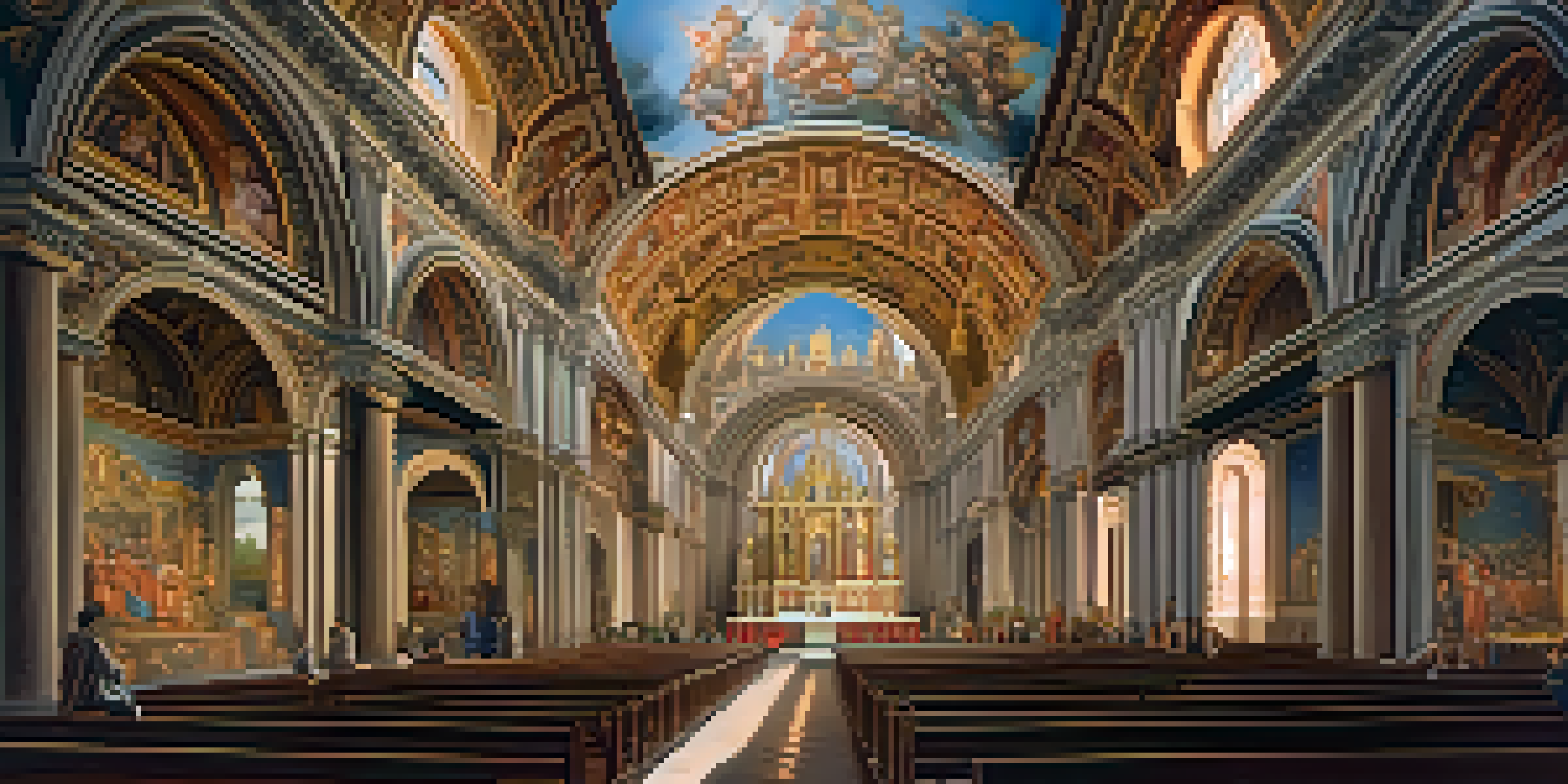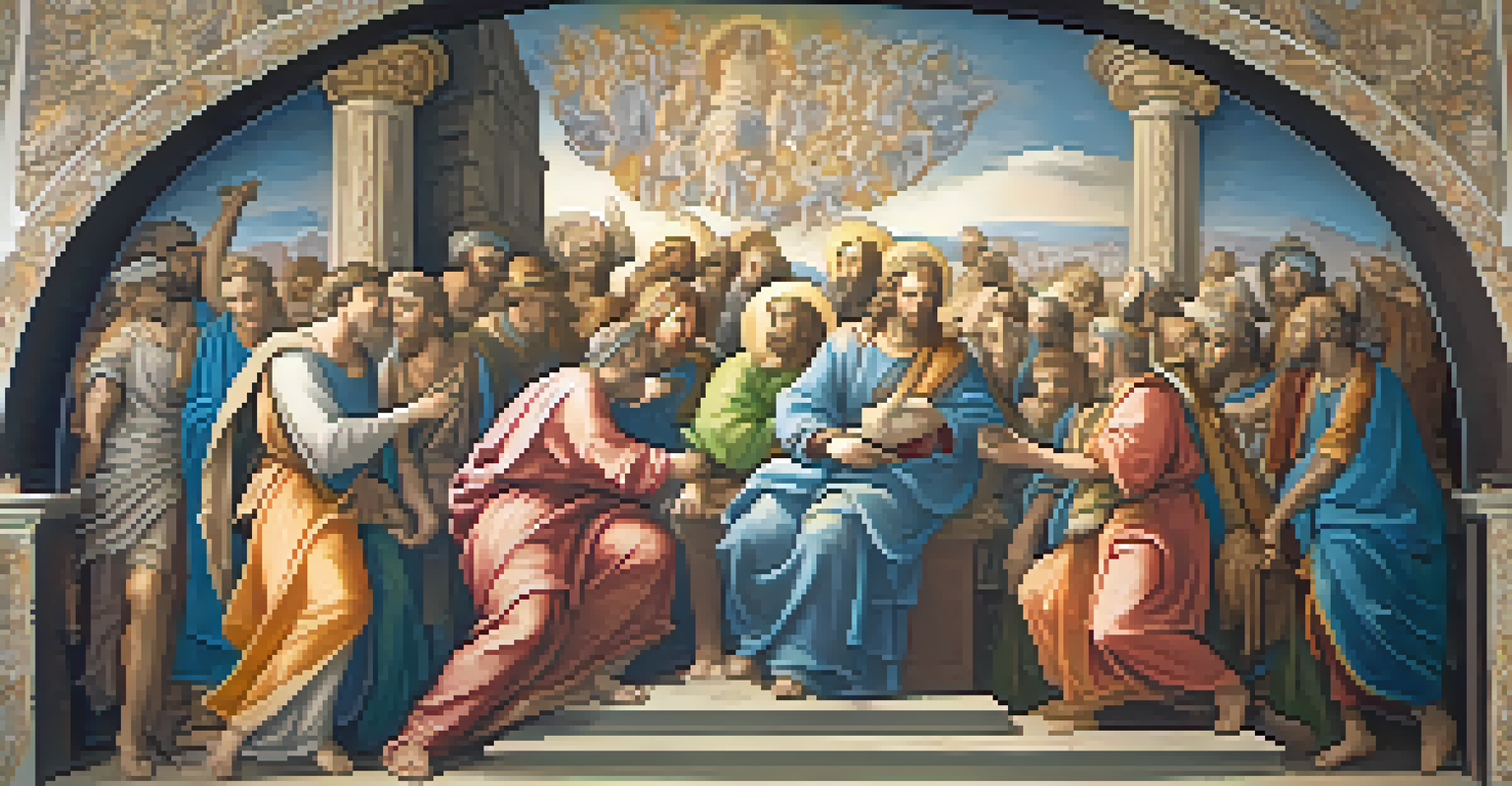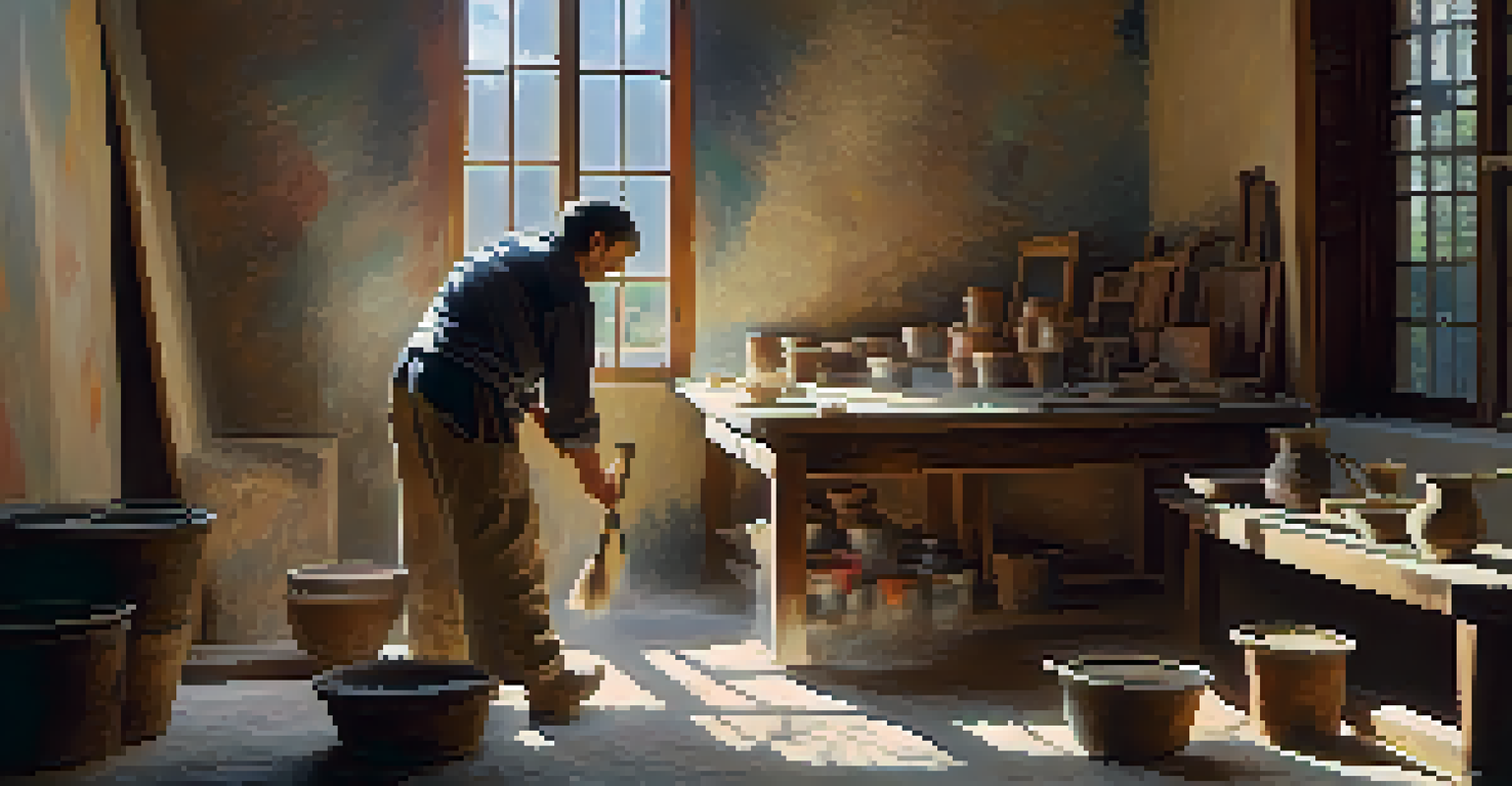The Renaissance Revival of Fresco Techniques in Italy

Understanding Fresco Techniques and Their Importance
Fresco painting, a technique where water-based pigments are applied to wet plaster, has roots tracing back to ancient civilizations. This method allows the artwork to become an integral part of the wall surface, ensuring its longevity. The vibrancy of frescoes adds not just color but also depth and texture to interiors, making them a vital part of architectural design.
Art is the most beautiful of all lies.
During the Renaissance, artists rediscovered and refined these techniques, recognizing their ability to convey complex narratives and emotions. Frescoes began to adorn the walls of churches, palaces, and public buildings, transforming spaces into immersive experiences. This revival was not merely about aesthetics; it was about storytelling, culture, and the human experience.
The revival of fresco techniques during this period marked a shift in artistic focus. Artists like Michelangelo and Raphael harnessed these methods to explore themes of humanity, divinity, and nature. Their work set a benchmark for quality and creativity, inspiring generations of artists to embrace this age-old technique.
Key Artists and Their Contributions to Fresco Revival
Prominent figures such as Michelangelo, Raphael, and Giotto played pivotal roles in the renaissance of fresco painting. Michelangelo's Sistine Chapel ceiling is perhaps the most iconic example, where he masterfully combined narrative and anatomy. His ability to depict the human form in dynamic poses elevated fresco art to new heights, showcasing the potential of this medium.

Raphael, known for his harmonious compositions, also made significant contributions to fresco techniques. His work in the Vatican, particularly 'The School of Athens,' exemplifies the blend of classical philosophy and humanism. Raphael's use of perspective and color breathed life into his frescoes, providing a template for future artists to follow.
Fresco Techniques Enhance Art and Space
Fresco painting integrates vibrant colors and textures into wall surfaces, enriching architectural design and creating immersive experiences.
Giotto, often considered a precursor to the Renaissance, laid the groundwork for the revival of fresco techniques. His innovative approach to narrative storytelling and emotion in art set the stage for later masters. The transition from the flat, stylized figures of the medieval period to Giotto's more naturalistic style marked a significant evolution in fresco painting.
The Techniques Behind Renaissance Frescoes
The techniques employed in Renaissance fresco painting were both intricate and labor-intensive. Artists typically began by sketching a detailed outline on the wall, which served as a guide for applying color. Once the plaster was laid, they worked quickly, as the pigments needed to bond with the wet surface before drying.
Every artist dips his brush in his own soul, and paints his own nature into his pictures.
A crucial aspect of fresco painting is the choice of pigments. Artists used natural materials, such as mineral-based colors, to achieve vibrant hues that would withstand the test of time. The process required not only skill but also a deep understanding of color theory and how different shades interacted with light.
Moreover, the layering technique played an essential role in creating depth. Artists applied multiple layers of plaster, allowing for gradual building of texture and detail. This meticulous approach ensured that the final product was not only visually stunning but also durable, with some frescoes still captivating audiences centuries later.
Cultural Significance of Frescoes in the Renaissance
Frescoes from the Renaissance period are more than just beautiful art; they are historical documents that reflect the culture and values of the time. They often depicted biblical scenes, classical mythology, and humanist ideals, serving as a visual narrative of the society's beliefs and aspirations. These artworks were a means of communication, conveying messages to a largely illiterate population.
Additionally, frescoes played a crucial role in the identity of institutions, particularly in religious settings. Churches adorned with grand frescoes not only showcased the power of the church but also served to inspire faith among the community. The artistry within these spaces created an atmosphere of reverence and awe, drawing people into a deeper spiritual experience.
Renaissance Artists Revived Frescoes
Prominent artists like Michelangelo and Raphael revitalized fresco techniques during the Renaissance, blending narrative with dynamic human forms.
As public spaces also embraced frescoes, they became a way to celebrate civic pride and cultural identity. Frescoes in town halls and public buildings illustrated local history and achievements, fostering a sense of belonging within the community. This blending of art and society showcased how integral frescoes were to the Renaissance cultural landscape.
The Decline of Fresco Techniques and Their Legacy
As the Baroque period emerged, fresco techniques faced a decline due to evolving artistic preferences and the rise of oil painting. While oil allowed for greater detail and versatility, frescoes began to be overshadowed by this new medium. However, the rich history and techniques of fresco painting did not vanish; they remained a reference point for future artists.
Despite the decline, the legacy of Renaissance frescoes continues to influence contemporary art. Artists today often revisit these techniques, experimenting with modern materials while paying homage to the past. The revival in interest has led to workshops and educational programs aimed at preserving traditional fresco methods.
Moreover, the impact of Renaissance frescoes extends beyond the art world. They have inspired architectural design, interior decoration, and even film, where the interplay of light and color captures the essence of these historical works. The revival of fresco techniques during the Renaissance may have waned, but its imprint on culture and art remains indelible.
Modern Applications of Renaissance Fresco Techniques
In recent years, there has been a resurgence of interest in Renaissance fresco techniques among modern artists and restorers. With a focus on authenticity and tradition, artists are exploring how these methods can be applied to contemporary works. This revival not only preserves the techniques but also breathes new life into the medium.
Many art schools and institutions now offer courses specifically dedicated to fresco painting, emphasizing its historical significance and practical application. Students learn the intricacies of mixing pigments, preparing surfaces, and executing large-scale murals, keeping the art form alive for future generations. These educational efforts highlight the enduring relevance of fresco techniques in today’s art landscape.
Frescoes Reflect Cultural Values
Renaissance frescoes served as visual narratives of contemporary beliefs and ideals, shaping both religious and civic identity in society.
Additionally, architects and designers are increasingly incorporating fresco elements into modern spaces, using them as a way to connect with history. This blend of old and new creates a dialogue between past craftsmanship and contemporary aesthetics, enriching the cultural fabric of our environments. By embracing these techniques, modern creators pay tribute to the artistry of the Renaissance while forging their unique paths.
Conclusion: The Timelessness of Fresco Art
The Renaissance revival of fresco techniques in Italy marked a significant turning point in the history of art. It not only showcased the incredible talent of artists but also highlighted the cultural and societal shifts of the time. Frescoes serve as a reminder of the importance of storytelling and the expression of human experience through art.
As we look at these magnificent works today, we are reminded of the enduring legacy of fresco techniques. They continue to inspire and inform modern artists, architects, and historians alike. The impact of this revival is felt not just in the art world but also in how we understand and appreciate cultural heritage.

Ultimately, fresco art transcends its physical medium, resonating with themes of beauty, faith, and humanity. The techniques developed during the Renaissance continue to be celebrated and revived, ensuring that the spirit of this remarkable period lives on in our contemporary world.